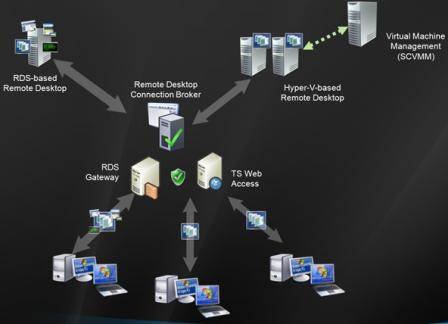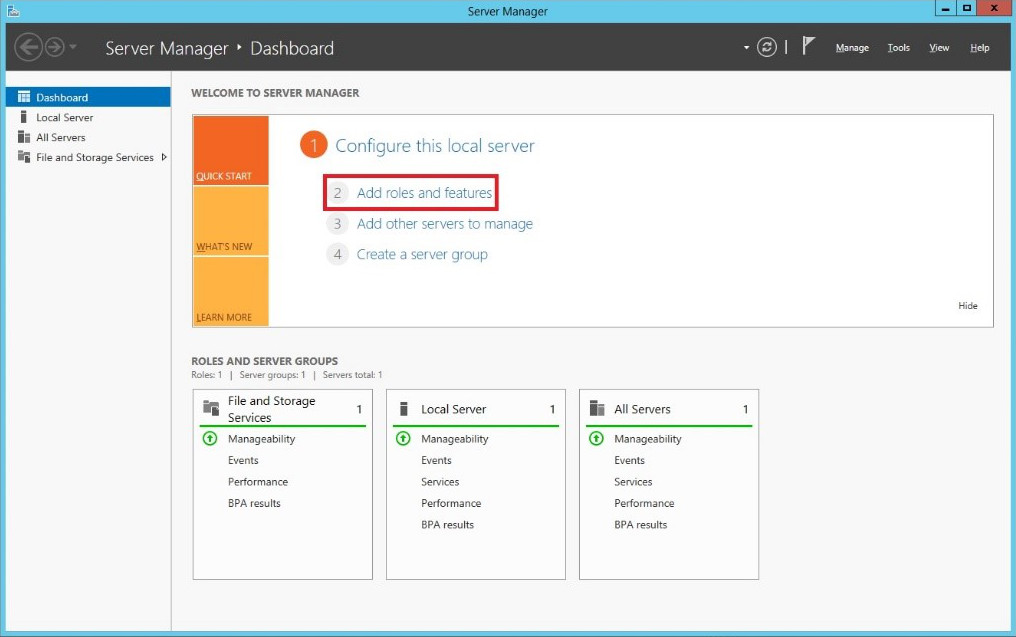- RD Licensing Configuration On Windows Server 2012 - Microsoft ...
- Remote Desktop Services Manager 2012
- See Full List On Docs.microsoft.com
Activating a Remote Desktop Services license server. After installing and configuring the Remote Desktop Services (RDS) role in Windows server, a license server needs to activated. Without an activated license server, clients will fail to connect to the Session Host server when the licensing grace period expires. To activate the license. Remote Desktop Services in Windows Server 2012/2012 R2 and Windows 8/8.1 (Part 3) Introduction. In Part 1 of this series, we looked at how changes and improvements in Remote Desktop Services in Windows Server 2012/2012 R2 and Windows 8/8.1 have improved the overall experience for end-users. The latest version of Remote Desktop Services, available in Windows Server 2012, improves longstanding capabilities - and adds new ones - that can help you deliver desktops and applications and still maintain a good user experience.
- Mar 16, 2019 Configuring Windows Server 2012 Remote Desktop Services Licensing involves 2 step process. Note Make sure that the new License Server is already added to the Server Pool on the RD Connection Broker Server before you add it to the deployment. Configuring the Deployment Settings.
- Mar 20, 2014 I did all the steps, my host DC has the RDlicense server installed and activated, HyperV server 2012, joined the Domain, loged it with doamin admin user/pass, added Remote Desktop Service Installation - no errors. But I can't see the License server, I can't access any shares on host DC, I can ping the DC but can't see any shares.
This is a guide to performing a single server RDS Deployment in Windows Server 2012 R2.
Remote Desktop Services provides desktop and application deployments to any device. Remote Desktop Services enables virtual desktop infrastructure, session-based desktops, and applications, allowing users to work anywhere. Previously called Terminal Services prior to Windows 2008 R2, there are many more features and it provides a much more robust environment than previous versions.
Further reading on RDS can be found here:
The purpose of this article is to provide you instructions for a basic deployment to get you started.
Topics include:
- Session-based Single server Deployment
Step 1. RDS Role Installation/Deployment
We will start with Server Manager and adding the Role to the server. The system will need to be available for a reboot for this process.
From Server Managerclick Manage > Add Roles and Features Wizard
Click Next.
Select Remote Desktop Services installation.
Click Next.
Select Quick Start for a single server deployment.
Note: Minimal configuration is required when this option is selected. Options can be modified after deployment from Server Manager.
Click Next.
For the purpose of this walkthrough, select Session-based desktop deployment.
This provides users with a full desktop experience on the server OS itself whereas virtual based deployment connects users to Virtual Machines.
Click Next.
Click the server name and click the arrow to add it to the right column.
Click Next.
Note: Multiple servers can be added to Server manager on one server. When this is done you would see those servers listed here as well and RDS could be Installed and deployed on all of them at the same time. This can be done for deploying any role in Windows Server 2012. For further reading on configuring adding multiple servers to Server Manager see article:
If a reboot is possible check 'Restart the destination server' and click Deploy.
The system will reboot one time during this process and it is required for the role to be installed.
Once complete, Remote Desktop Services will be listed in Server Manager. A quick session collection is created automatically as part of choosing the 'Quick Start' deployment. A Standard deployment requires a manual collection to be created on the Connection Broker server. In this scenario one server contains all roles.
You are given the option of adding more RD Session Host servers or create a collection of Session hosts.

Note: If desired, more than one Session Host can be added by clicking 'Add RD Session Host Servers'
- The RDS Licensing feature is not added to this machine during the RDS deployment, however it can be added to this machine or a different one within the domain.
- RDS CALs (Client Access License) must be added to the license server.
Note: The licensing grace periodwill run out at the end of 120 days. At this point no more than 2 RDP connections will be able to concurrently connect.
Note: RDS CALs are not the same as 'Server CALS', which are a documentation-only type CAL for allowing connections to shared folders, ftp, etc.
Click RD Licensing.
Click the server name and then click the arrow to move the server name to the right-hand column.
Click Next.
The wizard will add the server as the license server and install the license server service when you click Add.
Click Add.
The licensing service is now installed, and configured as the license server for this deployment. But the license server must still activated and RDS CALs added.
To do this openAdministrative Tools > Remote Desktop Services > Remote Desktop Licensing Manager.
Note: Remote Desktop Licensing Manager will not be available until the RD Licensing has been added through Server Manager.
As we see our license server is yet to be activated and the default scope was set to Domain.
Note: The default scope is fine for our purposes but can be changed if desired.
IMPORTANT: The license server is not added to the AD Group 'Terminal Server License Servers' automatically. This will prevent Per User CALs from being issued and also will prevent tracking of Per User CALs.
Right click the server name and click Review Configuration.
This setting will not be relevant if the Per Device CALs are being used. However if Per User CALs are going to be used, click Add to Group and it will be added to the AD group.
Right click the server name again and click Activate Server.
For further instructions on activating the License server see article:
Now that the server is activated with Microsoft, Install Licenses is no longer greyed out.
CALs may now be added to the License server.
RD Gateway - Optional
Remote Desktop Gateway is used to allow secure connections using HTTPS from computers outside the corporate network.
It offers the following benefits:
- Secure connections via HTTPS (Port 443 Default) without the use of a VPN
- Enables connections through firewalls without opening additional ports IE:3389
For configuration and more information see article: https://www.dell.com/support/article/HOW10137
Virtual machine-based Session Collections
A session collection consists of one or more Remote Desktop Session Host servers.
This is a list of requirements to successfully create a collection. This information is not necessarily found in in the 'Before You Begin' section as we will see below.
Requirements
- A Windows Server 2012 Remote Desktop Services Virtual-machine based deployment.
- A user or user group already existing in Active Directory that you want to have access.
- At least one RD Session Host that is available to be added to the collection.
- Hyper-V Role Installed
- A SYSPREP generalized, 'Generation 1' Hyper-V virtual machine, added to Hyper-V to be used for the template.
- DHCP scope configured to point clients to the AD DNS server.
To create a session collection click 'Create session collections' from Server Manager > Remote Desktop Services
Click Next.
The collection name will only be displayed to users coming through Remote Desktop Web Access. This may or may not be utilized in your deployment.
RD Licensing Configuration On Windows Server 2012 - Microsoft ...
Specify the name you would like to use.
Click Next.
Here we are given two choices for collection type:
Pooled virtual desktops are essentially a group of virtual machines that users are dynamically assigned to use.
Personal virtual desktops are different in that users are assigned to specific machines.
The capabilities offered by each are also different.
For further reading see http://technet.microsoft.com/en-us/library/ee216741.aspx
Important: A virtual machine should not be both a member of a virtual desktop pool and assigned to a user as a personal virtual desktop.
Note: A virtual machine in a virtual desktop pool can be configured to be automatically restored to its original state after the user logs off. Any changes that a user made while logged on are lost. For more information, seehttp://go.microsoft.com/fwlink/?LinkId=143453.
For this collection we will do aPooled virtual desktop collection.
Leave 'Automatically create and manage virtual desktops'Checked and click Next.
Here we select our virtual-machine template that we made available earlier. Click Next.

Note: If the template selected is not a Generation 1 Hyper-V Virtual machine, or has not been sysprepped with the /generalize option, you will receive one of the following errors.
Here we may provide an answer-file for configuration if desired. For this demonstration we will simply provide the information needed.
Click Next.
Select the appropriate time zone to be used for the virtual machines in the pool, and the organizational unit you want them placed in Active Directory. The VM's will be automatically joined to the domain selected below. It is important that the permissions needed for the specified OU are added for the user creating this collection.
Select the domain, and OU if desired, and click Next.
Remote Desktop Services Manager 2012
Here we select the User Groups we wish to allow to connect to the VM collection we are creating. We also need to specify how many Virtual Desktops we want to be generated, and the prefix and suffix for naming convention.
Specify desired information and click Next.
The Virtual Desktop Storage is simply where the generated VM's will be physically stored. Here we have selected to store them on the RD Host they are created on.
We have also opted to have their states roll back to their original state when the user logs off.
Specify desired settings and click Next.
User profile disks store profile settings and data in a central location. Since we have a single server solution, we have stored them on one of our local hard drives. These may be stored on a network share.
Specify desired location and click Next.
On the Confirmation summary screen click Create.
See Full List On Docs.microsoft.com
The session collection will now be created, VM's or otherwise called Virtual Desktops will be generated and added to hyper-v as well as joined to the domain that was specified. This process can take quite some time and is determinate upon how many VM's were chosen to create.
Below we see our Collection has been created, and 2 Virtual desktops added.
Here we see the VM's named, and added to hyper-v. They can be managed as regular Hyper-V virtual machines as far as adding resources, etc..
Finally, if we open a web browser and connect to our server we will see our collection available for connection.
This can be done by typing https://SERVERNAME/RDWeb.
